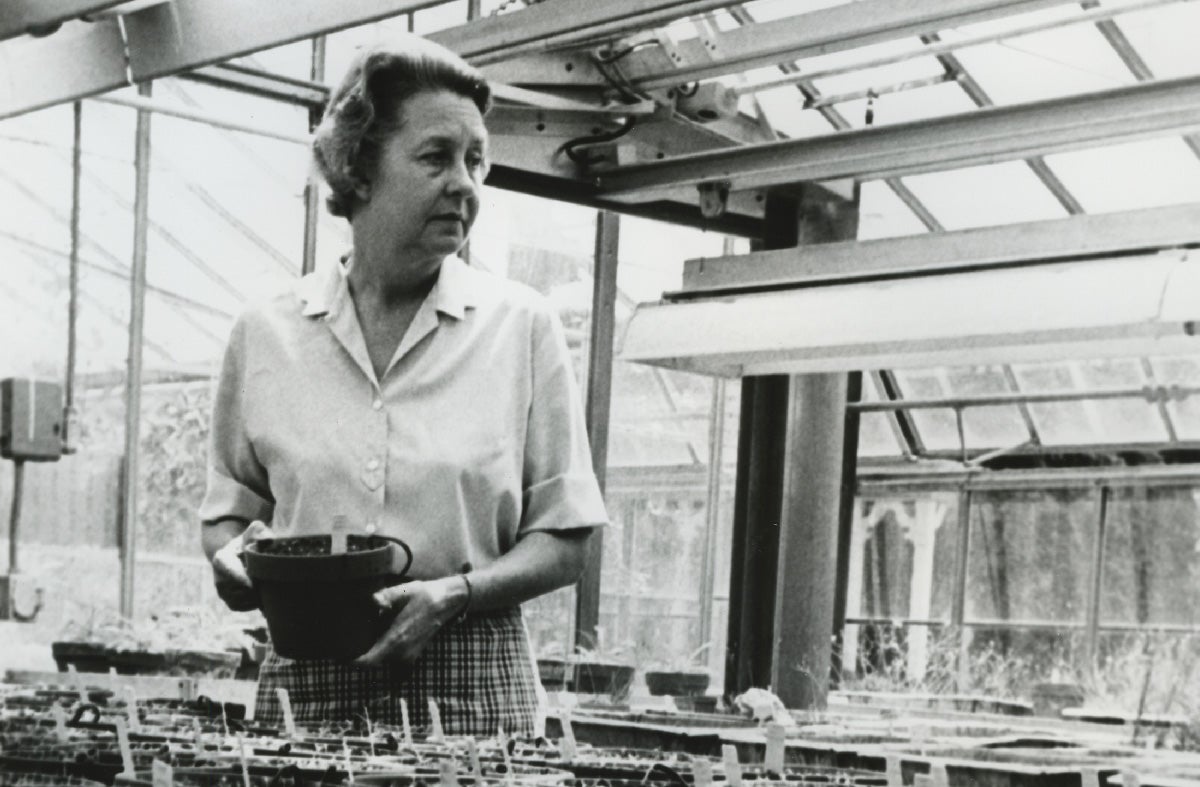Elsie Quarterman was the first woman to serve as an academic department chair at Vanderbilt. She is best known for her work on the ecology of Tennessee cedar glades, a habitat that occurs when limestone bedrock is at or near the ground’s surface. These areas feature very shallow soil or exposed bedrock, rendering trees unable to grow. The “cedar” in the name comes from the abundance of eastern red cedar that grows on the margins of the glades or in cracks in the bedrock where roots gain a foothold.
Quarterman is credited with rediscovering in 1969 the native Tennessee coneflower, Echinacea tennesseensis, a plant only found in Middle Tennessee cedar glades that was previously thought to be extinct. It became the first plant endemic to Tennessee to be protected by the Endangered Species Act, and thanks to her efforts to establish more populations within the cedar glades, was removed from the endangered species list in 2011.
Today, Echinacea tennesseensis can be found in Tennessee’s Davidson, Wilson and Rutherford counties. In 1998 the 185-acre forest near LaVergne, Tennessee, where Quarterman conducted much of her research was named the Elsie Quarterman Cedar Glade State Natural Area in her honor.
Born in 1910 in Valdosta, Georgia, Quarterman grew up on a family farm and first learned about wild plants from her mother. She earned a bachelor’s degree from Georgia State Woman’s College (now Valdosta State University) in 1932 and a master’s in botany from Duke University in 1943. She came to Vanderbilt as an instructor in biology the following year and was named assistant professor in 1948, before receiving her Ph.D. in plant ecology from Duke in 1949. Quarterman was named associate professor at Vanderbilt in 1952.
In 1953 she was called upon to assist with an effort led by the Vanderbilt Garden Club to conduct the first complete inventory since 1879 of trees on campus. As part of this project, the Garden Club donated several hundred markers that were placed on trees by members of the Beta Beta Beta Club, a biology honorary society, under Quarterman’s direction. This tree-labeling tradition continues today on the Vanderbilt arboretum, which includes the entire campus of Vanderbilt University.
In 1964, Quarterman became the first woman to chair a department, the Department of General Biology, at Vanderbilt. She was named a full professor in 1966 and awarded emerita status in 1976. Her efforts in teaching and conservation continued well after retirement from the university, including identifying for the federal government areas that should be set aside for conservation.
Quarterman’s legacy continues in the number of botanists who followed in her footsteps. “Her passion for the plant life of Middle Tennessee’s cedar glades blooms ever strong through the generations of students she inspired at Vanderbilt University from the 1940s into the mid-1970s,” according to a 2011 profile in The Wilson Post. “Those students, many now teachers themselves, continue to inspire new students and conservationists.”
